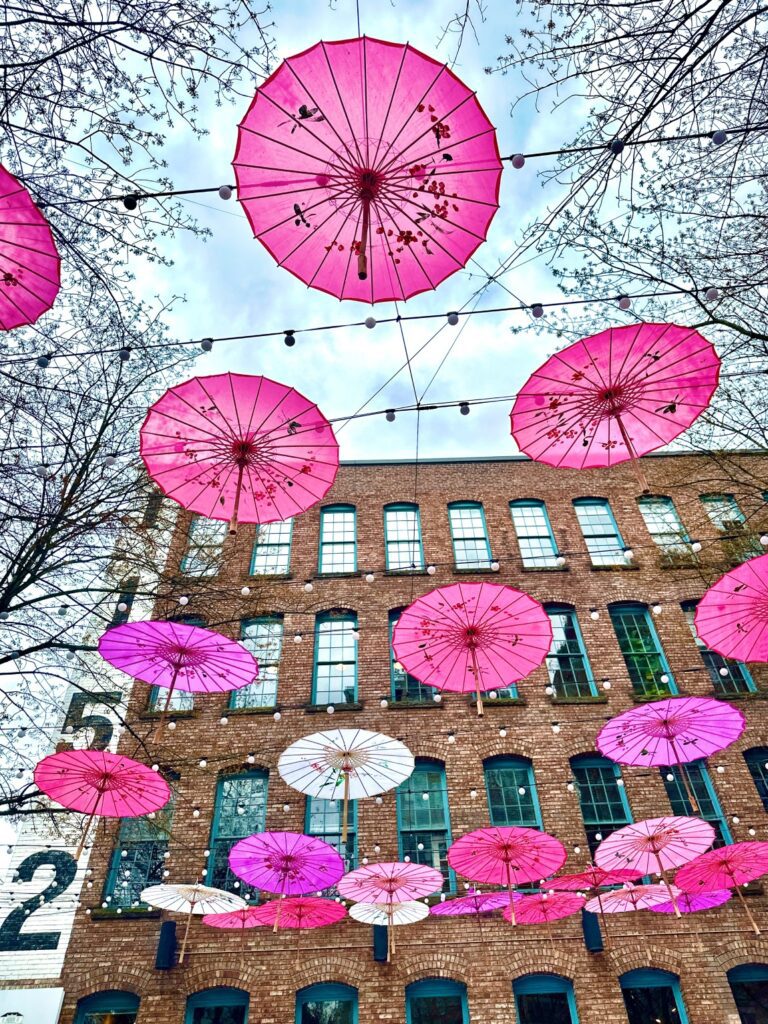VM Voices: A shift in the universe

Guest post by Mital Shamji Gorman
Recently I have experienced a shift in the universe. It feels like the world is taking a big breath and about to transform. Our social fabric appears to be wrestling around racism with online platforms waxing lyrical about racism and anti-racism – a welcome fallout from the harrowing murder of George Floyd in the US. The polarized reactions to the sequential protests, followed by the tearing down of statues in England, as well as my own and others’ experiences, reminds me that there is still more work to be done.
My online journeys have been filled with harrowing reminders of the scale of police brutality against black and brown people as well digesting our colonial history of white supremacy that has “denigrated, exploited and subjugated black lives. Recently I have been reading about people’s experiences of microaggressions and instances people of colour have felt unheard and unseen by white people.
Being a mum and person of colour, I have spoken to my children about race and how people may sometimes perceive others differently. I moved to Vancouver from a dense, racially diverse London borough and now live in a predominantly white community. I’d like to think I’ve imparted enough knowledge to help my kids navigate negative encounters around their race. But sometimes as an adult, I too struggle to address conversations around my culture.
I have heard new phrases like ‘white fragility’ and ‘white privilege’. People of colour are sharing their stories online and reliving times they felt were unjust. White people are either in denial of their privilege or acknowledging their privilege and promising to do more to help people of colour feel heard.

With this new awareness comes a desire by influencers and online platforms alike to help by educating their publics about race. There are a plethora of recent articles teaching how to bring more diversity into our lives; how to stand up to racism; how to talk to our child about racism. White people are taking a close, hard look at themselves. Or at least that’s what I’m reading online.
When I came across an article about race from a platform I follow, I was interested and read it. The article mentioned symbols of hate, including the ‘swastika’, but no mention of its Hindu origins, how it’s used today by Hindus and how the symbol was appropriated by the Nazis.
‘Oh no’ I thought. ‘Here we go again’. I was worried that online platforms were hijacking the race conversation without doing any real work to educate about racism.
Since I moved to Vancouver I’ve been a bit conscious of displaying my swastika or in Sanskrit, ‘svastik’, for fear of offence and hurt for what the symbol means in modern history. I do not claim to know the entire origins of the svatik, but I feel strongly about educating people about the symbol’s good meaning. Growing up in London’s multicultural suburb, this knowledge was just accepted and normal to see at cultural events, in the temple, at pujas and on our doorsteps during Diwali.
It can be a tricky and sometimes cumbersome conversation. My first memory of being aware of this symbol’s modern history was in school, when my teacher took me aside and told me to conceal the twirly svasti I had beautifully drawn on my Religious Studies notebook. I went to an all girls school which was very diverse – Hindus, Jewish, Muslims and Christians. We were fortunate to be able to have candid discussions about the symbol and share our feelings with our teacher, still, I stuck a sticker over the svastik nevertheless, hoping the conflict would be forgotten.
Fast forward about 20 years, as event organiser for London City Hall’s Holocaust Memorial Ceremony, I heard Holocaust survivors tell their moving stories. We later talked about symbols of hate and how the svastik was manipulated and taken by the Nazis during World War II. I was pleased to hear so many young people had gained this knowledge.
Ten years ago, my now white husband met my brown parents for the first time and arriving at the door he was surprised to see the red svastik adorning our entrance. He asked me about it after the meeting. He had only ever seen the svatik in the context of it’s evil meaning. Once again I embarked upon educating him, and later his friends and family about the svatik’s history and what it means to Hindus around the world.
When I moved to Vancouver I didn’t display any religious ornaments with the svastik as I was too embarrassed of them and didn’t want to deal with the conflict. A few Diwalis went by and I decided enough was enough. Encouraged by friends, I adorned my doorstep with the symbol at Diwali time, as my mother had done for us, and her mother before her.
We discussed the symbol with friends, so they knew what it meant for us and many Hindus and Jains around the world. As part of our annual cultural event celebrating Diwali, we decorated the doorsteps with bright rangoli patterns, mandalas and aums. When my son started drawing our svastik, a passerby stopped, objected and asked us to consider how people in the area might react to this symbol. He was upset because the previous week someone sprayed the swastika on his garbage bin. I was saddened to hear of his experience, offered comforting words and explained the meaning about our symbol. He wasn’t happy about it still being there on the ground, but I asked the kids not to draw anymore to deter further upsets.
I had hoped more people could understand that whilst the swastika was a symbol of hate, the svastik had been revered for nearly eternity. Us Hindus have it visible during religious ceremonies and displayed in our homes. It means ‘wellbeing’ in the ancient Sanskrit language.
I was determined to ensure the article reflected this. ‘A simple, friendly email will fix this’, I thought. Although writing the email was not as simple as it sounded. I agonised over the tone of my email ensuring there was context, I was polite and persuasive.
I received a prompt and short reply assuring me that they were aware of this symbol’s meaning and that the article would be amended. ‘Success! What was I sweating about? I can’t believe that was so easy’. I had surpassed expectations. What had seemed so hard to do was actually okay so I was pleased with the reply.
The reply had at first seemed a bit short but the writer explained she was juggling a lot of balls. I get it – I’m a working mum too. I felt triumphant. Had I knocked down a wall or toppled a statue? Neither, but I felt heard and was content knowing readers would be better armed with knowledge that the swastika was hijacked by Hilter but remains to be a symbol of wellbeing in the households of Hindus around the world.
Many days passed. I checked online to see what changes had been made. I was hugely disappointed. The article remained the same. I felt unheard, sad and dejected. But most of all angry. I could feel the heat rising. I strongly believed this misunderstanding needed a prompt public acknowledgement.
I’m not sure if I was upset about the additional, crucial swastika information not being shared, or being told by the platform they’d make the change but not action it. I’ve now deduced that it’s the latter that’s bothering me the most. Mainly because this inaction was something I have experienced time and time again. My knee-jerk reaction was to send the editor a disgruntled email.
I had to talk to friends about my situation as I was confused and needed advice and guidance: I had just sent a cross email to the editor and hadn’t articulated my feelings very well. I was seeing red and needed help conveying my feelings.
Cue: my friend to the rescue. Thank you friend. She suggested a response I might make:
“I understand you are juggling balls but the world is shitty right now, and it hurts when people with platforms don’t respond quickly to people of colour, because we usually end up ignored or we give up. So this email thread was a reminder how far we have to go in learning about anti-racism.
“In these specific times, your effort to educate about anti-racism is awesome. Thank you. Still, feedback you receive from any black and brown voices needs to be amplified, or at least actively listened to and responded to. Otherwise it feels like a false effort.
“If you were taking time to learn more about the history of the Swastika, just tell me. If you wanted me to write the edit, let me know. If you are overwhelmed, that’s ok too. If you disagree, let’s disagree and I’ll move on. But saying “I will add a note” and then not communicating about a necessary edit to improve a resource on anti-racism, is particularly hard at this time in history.
Obviously I didn’t reply with all this, but I did reply with some of it. It opened up a dialogue and I was able to explain my feelings around the urgency to get race education right. Right now.
So I wrote this piece instead.
I remain in hope that people with platforms with a wide audience reach – bloggers and businesses, big or small – will hear this:
For some of us it takes great strength and deliberation to even approach you to correct something involving our race, culture or religion. When you welcome us with the door wide open don’t pretend we are not in the room. Thank you to those who are highlighting Black Lives Matter, racism, anti-racism and white privilege, but if you’re asking for true and meaningful engagement from people of colour and want to really be a part of the shift in the world – then expect to listen, respond and take real action.
Have an opinion? A story to tell?
Something you’d like to get off your chest?
Would you like to write for us? We welcome well-written guest submissions with a local interest slant. Share your tips, review local businesses and highlight hot trends for Vancouver moms. Get all the info on our Contributor Page!



















